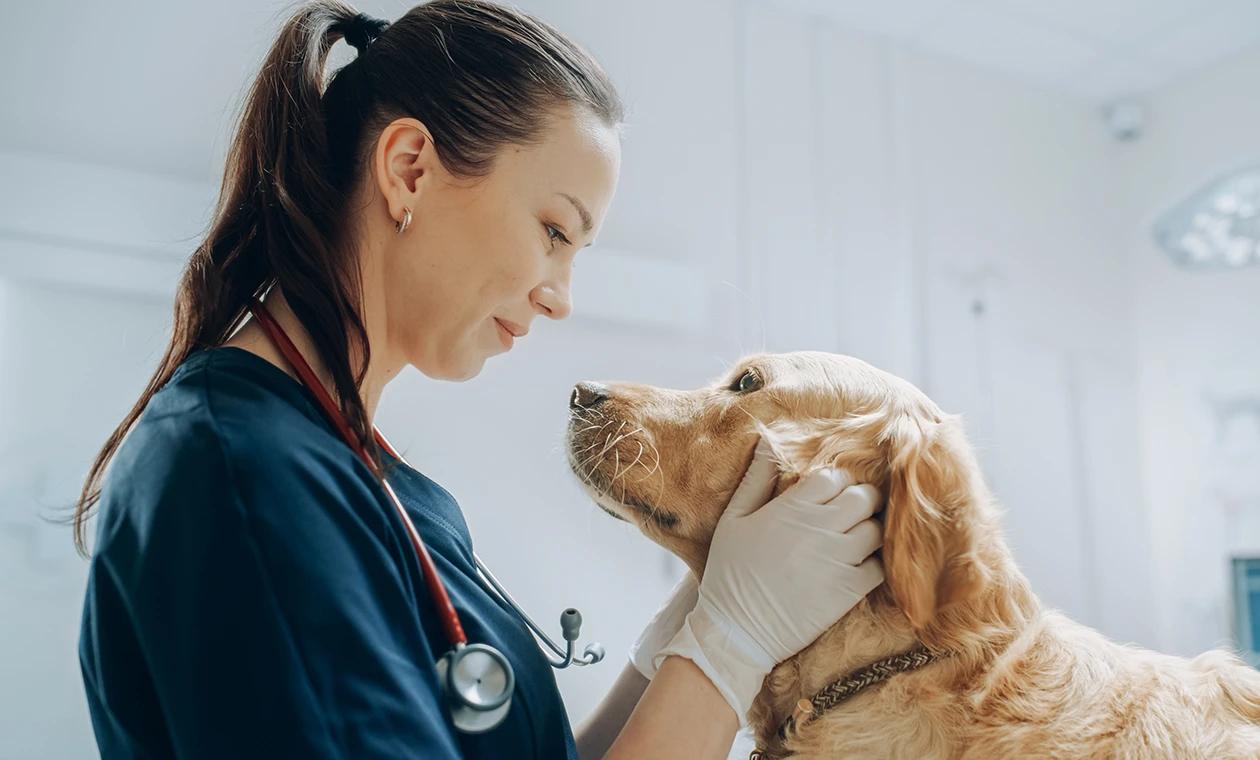

Sodium-glucose cotransporter-2 inhibitors (SGLT2i) are the latest entry into the world of feline diabetes mellitus. They revolutionized treatment of human Type 2 diabetes after introduction 12 years ago and are on their way to doing so for feline diabetes. New ways of thinking are needed. Appropriate patient selection is crucial for success; monitoring varies from what is done for insulin.
Treating diabetes mellitus can be quite challenging. Dietary therapy plays a large role. No insulin is perfect for all patients, and options are changing. Currently available insulin choices will be discussed. New paradigms in insulin monitoring will be discussed.
Hypoadrenocorticism has been called the great pretender. Presentation can be subtle and mimic many other diseases. A level of suspicion of its presence needs to be maintained. Therapeutic recommendations have changed recently, e.g. dose and form of glucocorticoid, dose of mineralocorticoid.
No monitoring tool for assessing diabetic control is perfect. Multiple monitoring options exist, all of which have advantages and disadvantages. Evaluating control means putting pieces of a puzzle together. The various options will be discussed – what they show, advantages and disadvantages, and how to use them.
Treating diabetes mellitus can be quite challenging. Dietary therapy plays a large role, although the diet recommendations and their effect differ between dogs and cats. No insulin is perfect for all patients, and options are changing. The currently available insulin choices will be discussed.

Spend an enjoyable and interactive two hours with a speaker who uses the term “contagious
mindsets” to explain group dynamics, relationships, even entire cultures in veterinary medical
clinics (and elsewhere).
As an attorney and nationwide consultant for many veterinarians and veterinary hospitals, Betsy
Choder will be sharing her experiences and many stories about the mindsets that seem to spread
easily, for better or worse, throughout the veterinary clinical spaces. She will describe both
positive and negative mindsets that are truly determinative and reliable indicators of a clinic’s
future success or failure as well as veterinarians’ reputations, including solutions toward
satisfying the public’s need for competent veterinary medical services.
Attend this seminar and learn ways to promote or overcome contagion – namely, through the
power of “mindset contagion”.
Spend an enjoyable and interactive two hours with a speaker who uses the term “contagious
mindsets” to explain group dynamics, relationships, even entire cultures in veterinary medical
clinics (and elsewhere).
As an attorney and nationwide consultant for many veterinarians and veterinary hospitals, Betsy
Choder will be sharing her experiences and many stories about the mindsets that seem to spread
easily, for better or worse, throughout the veterinary clinical spaces. She will describe both
positive and negative mindsets that are truly determinative and reliable indicators of a clinic’s
future success or failure as well as veterinarians’ reputations, including solutions toward
satisfying the public’s need for competent veterinary medical services.

This 3-hour interactive course will provide legal information for all aspects of proper handling of medication from purchasing, receiving, storage, and administration to the animals as well as handling of all body fluids and waste. Training and documentation records with examples will be available.
Federal, State and DEA requirements for all aspects of handling-controlled substances, documentation for administration, storage and disposal will be provided. This includes opioid crisis, sources to obtain fentanyl testing strips and free naloxone international for use of human exposure of opioids will also be available. Client information sheets will be provided for owners with discussion of legal documentation of client counseling to include discussion of handling medications and the animal that has been treated to include medical waste. Newer, safer chemicals
An interaction session in hour three will concentrate on the legal requirements of Hazardous Drug (HD)storage, handling, dispensing and disposal. NIOSH has a human HD list, however there is not a Veterinary HD list. This hour will cover the veterinary products in this category. Closed system syringes and vial adapters will be demonstrated with various vendor options. CDC guideline recommendations for Hazard Prevention and Control for a safe workplace will be discussed to include an infection control plan. Occupational risk for pregnant and immunocompromised worked will cover drugs to avoid or wear PPE.
This course is approved for 3 hours Florida CE, 1 or 2 hours that are race approved for Opioid handling and dispensing requirements in other states.
This 3-hour interactive course will provide legal information for all aspects of proper handling of medication from purchasing, receiving, storage, and administration to the animals as well as handling of all body fluids and waste. Training and documentation records with examples will be available.
Federal, State and DEA requirements for all aspects of handling-controlled substances, documentation for administration, storage and disposal will be provided. This includes opioid crisis, sources to obtain fentanyl testing strips and free naloxone international for use of human exposure of opioids will also be available. Client information sheets will be provided for owners with discussion of legal documentation of client counseling to include discussion of handling medications and the animal that has been treated to include medical waste. Newer, safer chemicals
An interaction session in hour three will concentrate on the legal requirements of Hazardous Drug (HD)storage, handling, dispensing and disposal. NIOSH has a human HD list, however there is not a Veterinary HD list. This hour will cover the veterinary products in this category. Closed system syringes and vial adapters will be demonstrated with various vendor options. CDC guideline recommendations for Hazard Prevention and Control for a safe workplace will be discussed to include an infection control plan. Occupational risk for pregnant and immunocompromised worked will cover drugs to avoid or wear PPE.
This course is approved for 3 hours Florida CE, 1 or 2 hours that are race approved for Opioid handling and dispensing requirements in other states.
This 3-hour interactive course will provide legal information for all aspects of proper handling of medication from purchasing, receiving, storage, and administration to the animals as well as handling of all body fluids and waste. Training and documentation records with examples will be available.
Federal, State and DEA requirements for all aspects of handling-controlled substances, documentation for administration, storage and disposal will be provided. This includes opioid crisis, sources to obtain fentanyl testing strips and free naloxone international for use of human exposure of opioids will also be available. Client information sheets will be provided for owners with discussion of legal documentation of client counseling to include discussion of handling medications and the animal that has been treated to include medical waste. Newer, safer chemicals
An interaction session in hour three will concentrate on the legal requirements of Hazardous Drug (HD)storage, handling, dispensing and disposal. NIOSH has a human HD list, however there is not a Veterinary HD list. This hour will cover the veterinary products in this category. Closed system syringes and vial adapters will be demonstrated with various vendor options. CDC guideline recommendations for Hazard Prevention and Control for a safe workplace will be discussed to include an infection control plan. Occupational risk for pregnant and immunocompromised worked will cover drugs to avoid or wear PPE.
This course is approved for 3 hours Florida CE, 1 or 2 hours that are race approved for Opioid handling and dispensing requirements in other states.

This 1 hour masterclass will briefly cover relevant anatomy and physiology before diving into husbandry, analgesia and anesthesia, and common presentations and disease processes for one of the most common pet reptiles in the industry!
This 1 hour talk aims to demystify the euthanasia process of exotic pets and covers reptiles/amphibians, birds, and small mammals. We’ll discuss sedation protocols and methods to confirm and assure death (especially important in reptiles).
This 1 hour masterclass will go into all aspects of ferret care and medicine, including husbandry and dietary needs, analgesia and anesthesia, and common disease processes and treatments.
This 1 hour masterclass will go into all aspects of rabbit care and medicine, including husbandry and dietary needs, analgesia and anesthesia, and common presentations and diseases.

The increase in small flocks as pets brings them knocking on your clinic door. However, these food animal species are special. This talk will cover the basics of care, recommendations when triaging and stabilizing patients, and the importance of respiratory disease in small flocks. Various resources will be presented.
What do you do with a respiratory case? What about the coccidia that doesn’t go away? Is this trauma case beyond repair? Is egg bound or sour crop really a thing? Can that bumblefoot be treated conservatively? Are we surgery bound? In this talk, we will utilize clinic cases to discuss how to diagnose and treat the most common poultry cases in your clinic.
Coelomic or abdominal cavity disease can commonly present as the enlarged abdomen, inability to walk, or chronic wasting disease. In this section, we will cover various presentations, diagnosis and treatment of both reproductive disease and neoplastic disease Including Marek’s disease and avian leukosis.

This lecture discusses common orthopedic diseases seen in juvenile canines through case examples. Exam findings, diagnostics, and treatments are discussed. Please note, there is some overlap of material between the Forelimb Lameness lecture and the Juvenile Orthopedic Disease lecture.
This lecture discusses common causes of forelimb lameness in dogs including elbow dysplasia, OCD, carpal hyper-extension, angular limb deformity and cervical injuries. Please note, there is some overlap of material between the Forelimb Lameness lecture and the Juvenile Orthopedic Disease lecture.
Acute and chronic soft tissue orthopedic injuries in dogs are challenging to diagnose and treat effectively. Many patients present on emergency for for injuries that could be related to muscle and tendon injuries but are not always obvious. This lecture takes the mystery out of some of the most common muscle and tendon injuries seen in dogs. The goal is to present practitioners with information to assist them in identifying these complicated cases. The diagnosis, treatment, and aftercare of calcanean tendon rupture, biceps tenosynovitis, supraspinatus tendon injuries, iliopsoas muscle injuries, and more are discussed.

Learn about toxic substances and illicit drugs working K-9’s (search and rescue, law enforcement, ATF) may encounter, as well as in-the-field emergency decontamination techniques. A brief overview of venomous snakes, insects, and arachnids and emergency in-the-field care for bites and stings will be provided.
Hazards lurk in our homes and yards. Help keep your pets and patients safe by learning how to recognize, avoid, and treat common toxins they may encounter. Taught by a veterinarian and Master Gardener!
In this two-part presentation, you will learn to recognize venomous snakes, arachnids, insects, and amphibians as well as the clinical signs and management of envenomation. Part I focuses on crotalids.
In this two-part presentation, you will learn to recognize venomous snakes, arachnids, insects, and amphibians as well as the clinical signs and management of envenomation. Part II focuses on elapids, arachnids, insects, and amphibians.

This 1-hour lecture will cover the radiographic anatomy of the small animal cardiac silhouette and pulmonary vasculature. Common radiographic changes associated with various acquired and congenital cardiac diseases will be reviewed.
This 1-hour lecture will review the three main radiographic pulmonary patterns in small animal thoracic radiography and their associated imaging findings. The radiographic findings of various pulmonary diseases will be reviewed.
This 1-hour lecture will cover the radiographic appearance of the stomach and small intestines, with a focus on various causes of vomiting. Ultrasound of the stomach, small intestines, and pancreas will be reviewed, and common radiographic and sonographic abnormalities associated with these organs in vomiting patients will be discussed.

There are numerous causes of hematuria in the canine and feline patients we see. In this lesson, we will focus on differentiating the causes that require surgical intervention. We will also discuss how to perform the surgical procedures and the proper follow-up. Complications of errors will be examined as well.
Hepatobiliary conditions are commonly seen in our patients. In this session, we will cover the indications for abdominal exploratory and the procedures most commonly required with hepatobiliary conditions: from liver biopsy to cholecystectomy to liver lobectomy and pancreatic biopsy.
Plate fixation of fractures has been the “gold standard” for many injuries in recent years. However, the equipment involved is expensive and not everyone has the case load to justify having this equipment as a standard in their practice. Additionally, many owners have financial constraints that limit referral and we may find ourselves in a position of repairing fractures without plates or amputating a limb. This session aims at providing the guidance for achieving success where possible in fracture repair without plating systems.
Many of our young patients present with some specific conditions that are many times only seen in patients that are less than 12 months old. This session will serve as a guide to differentiating and diagnosing these conditions. We will also cover the most commonly recommended treatments for each condition.

Who controls your schedule: You or clients? You need to turn a client-driven chaotic schedule into a practice-focused schedule. Organize appointments for efficient workflow, maximizing your team’s productivity and practice profitably. Get guidelines for doctor and technician appointments. Discover options to see sick patients the same day.
Because 70% of practices are short-staffed, you need timesavers that ensure healthy profits. Technology tools can make CSRs and technicians more productive while delivering engaging client experiences. Get insights on auto attendants for call answering, online booking, online forms for patient histories, ways to collect payments faster, and virtual medical assistants who are scribes during exams and surgery and answer calls.
When a rockstar CSR moved out of state, a Montana practice had the employee work remotely to answer phones, enter inventory, and schedule appointments. CSRs and managers can do all or part of their work remotely. Find out what remote employees do, benefits of remote and hybrid workers, how to stay connected with remote employees and ensure accountability, and how to ask your boss if you can work remotely.
After several years of overloaded appointments, many practices are facing same-day openings. Because full schedules ensure healthy profits, your CSRs should aim for zero empty slots. While a wait list will fill last-minute openings, contact clients with overdue pets to ensure full schedules. Use a combination of calls, texts, and emails to reach clients who got sideways on their pets’ preventive care.
When clients decline vaccines, blood work, or preventives, patient care and revenue suffers. Get strategies and scripts to increase compliance for preventive services, products, and procedures. Understand body language and how to use it during exam conversations. Present treatment plans so clients accept care.
When clients decline vaccines, blood work, or preventives, patient care and revenue suffers. Get strategies and scripts to increase compliance for preventive services, products, and procedures. Understand body language and how to use it during exam conversations. Present treatment plans so clients accept care.
Research shows 68% of dog owners leave the clinic without heartworm disease preventives, and only 5% of cats are on year-round heartworm disease prevention. Learn how to have a consistent team message about parasite protection. Discover strategies to increase dispensing of parasite products. Get how-to instructions to set up refill reminders.


What are some strategies to use to minimize the impact of anesthesia on those patients who have pre-existing renal disease, including fluid therapy, drug selection and what parameters are closely monitored.
What are the considerations for the animal that presents with a hemoabdomen that is not completely stable but requires anesthesia, what type of fluid therapy can be used, what agents can we use to improve blood pressure and what anesthetic agents can we utilize.
what are the different types of heart murmurs and what do they tell us about the heart function. What anesthetic agents can we use for the various conditions these murmurs represent.
What are the significant features of head trauma that must be recognized and considered to improve the outcome of brain perfusion. What anesthetic techniques can be utilized to improve recovery.
Monitoring Part I and 2 will discuss standard of care monitoring, we will identify and discuss the common ETCO2 waveforms and what they mean, oxygen delivery, blood pressure management and potential complications that can be detected with the use of monitors.
Monitoring Part I and 2 will discuss standard of care monitoring, we will identify and discuss the common ETCO2 waveforms and what they mean, oxygen delivery, blood pressure management and potential complications that can be detected with the use of monitors.

Review of diagnostic strategy, importance of obtaining a thorough and accurate history, and best tests and when they should be performed.
Everything from endoscopy for foreign body retrieval to pharmacologic control of acute and chronic vomiting. Management of chronic vomiting and inappetence in cats with chronic renal disease will be discussed.
Gastric hypomotility can cause a variety of issues including vomiting, abdominal discomfort/bloating, and intermittent inappetence. This disorder tends to be underdiagnosed in clinical practice. This session will review presenting signs, diagnostic strategy, and management options.
This session will include an update on GERD (gastroesophageal reflux disease), which is still an underdiagnosed disorder in dogs, and megaesophagus. Key updates for primary care veterinarians that will help you establish a diagnosis as early as possible.
This session will review diagnostic strategy for patients with diarrhea, focusing on which tests to order, where dietary trials fit, and when intestinal biopsies are indicated.
This session will focus on IBD and intestinal lymphoma, common causes of diarrhea in middle aged to senior cats. Many cats can be managed for an appreciable period of time. Accurate diagnosis is essential (IBD vs. lymphoma, which is it?). This session will cover details on managing cats with either IBD or lymphoma for best success.
IBD is a common cause of chronic vomiting and/or diarrhea in Dogs. This session covers updates on diagnosis and management with an emphasis on newer therapeutic approaches. Case examples will be highlighted.

Utilizing clinical cases and scenarios, this session will provide an overview of the diagnostic approach for dogs and cats with a thrombocytopenia. An emphasis will be placed on differentiating primary immune-mediated thrombocytopenia from infectious or non-immune causes of thrombocytopenia.
This session will provide an overview of recent research advances and strategies for using immunosuppressive and other supportive therapies for dogs with immune-mediated thrombocytopenia. Case discussions will be used to help highlight immunosuppressive therapy in individual patients.
The coagulation profile is one of the most routinely used diagnostic tests for dogs and cats with bleeding disorders, and accurate interpretation of the results is essential for a successful case outcome. Using clinical cases, this session will help the audience become more comfortable with interpreting diagnostic tests of coagulation and improve the management of patients with coagulation disorders.

Dive into the transformative role of cytology in diagnosing and managing atopic dermatitis in dogs and cats. This session will explore how microscopic examination provides invaluable insights into skin health, guiding personalized therapeutic approaches. Attendees will gain practical knowledge to integrate cytological techniques into clinical practice, ultimately improving outcomes for pets with atopic dermatitis.
Fluorescence photobiomodulation is a type of treatment that uses light to alter cellular metabolic pathways to promote tissue healing and regeneration, and to reduce pain or inflammation. It has demonstrated success in the treatment of several veterinary dermatological conditions including wound care and infections, even antibiotic-resistant infections. This lecture will review how and when to implement this therapy in common and complex dermatology cases.
New therapeutics for the managing of canine allergy in veterinary dermatology provides veterinarians with additional treatment approaches for acute and chronic allergy. Join in as we discuss some tips for getting the most out of these medications, and how to implement a multimodal treatment approach for maximum allergy control in dogs.